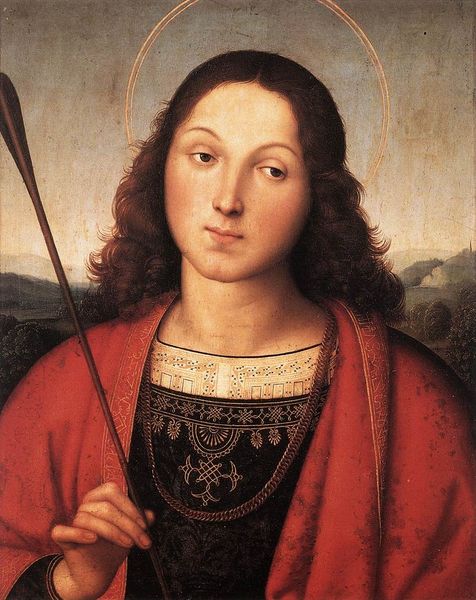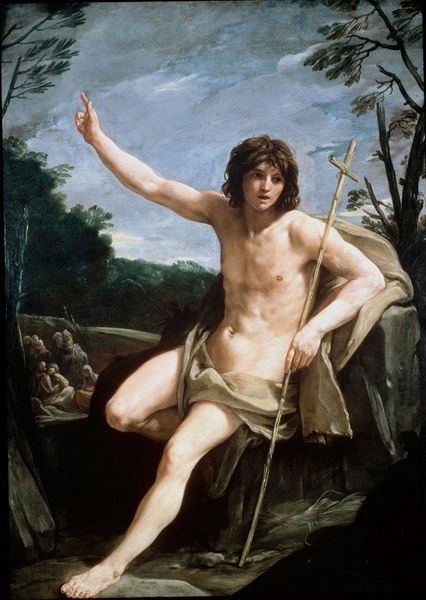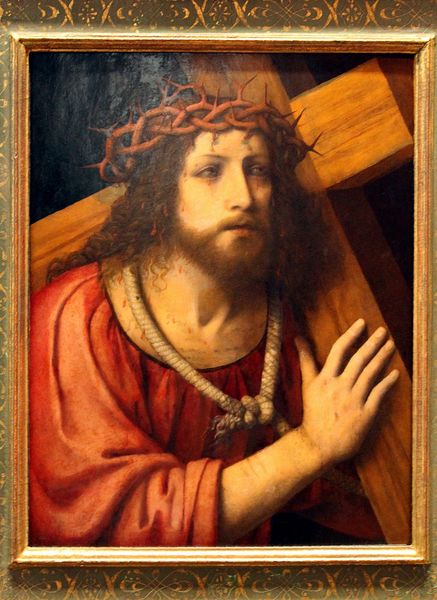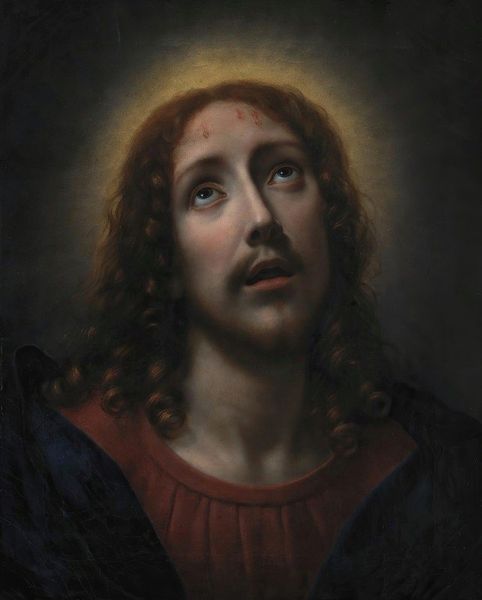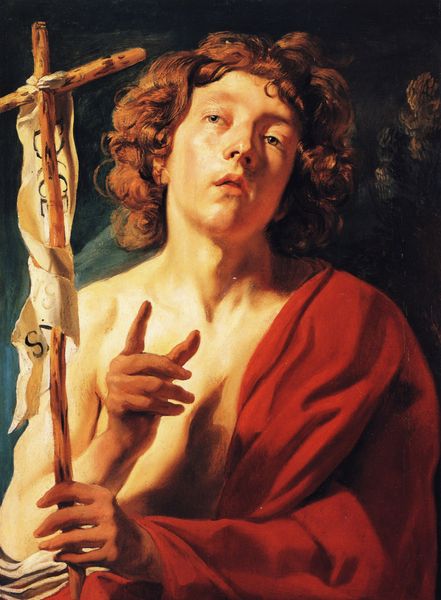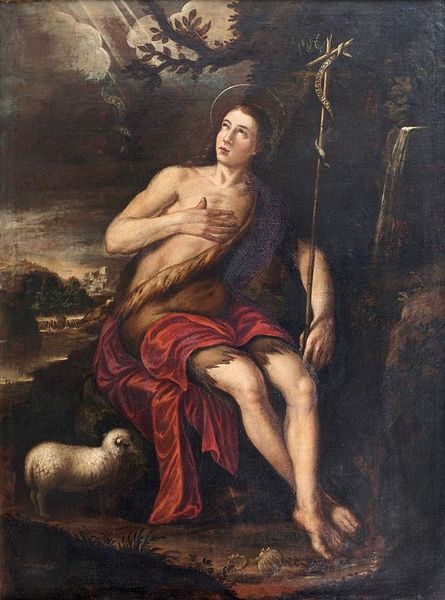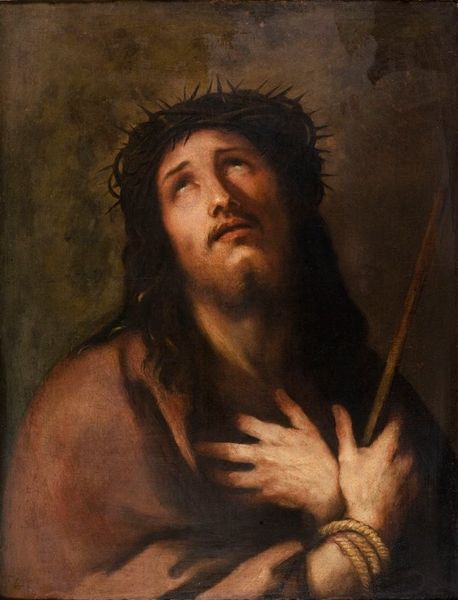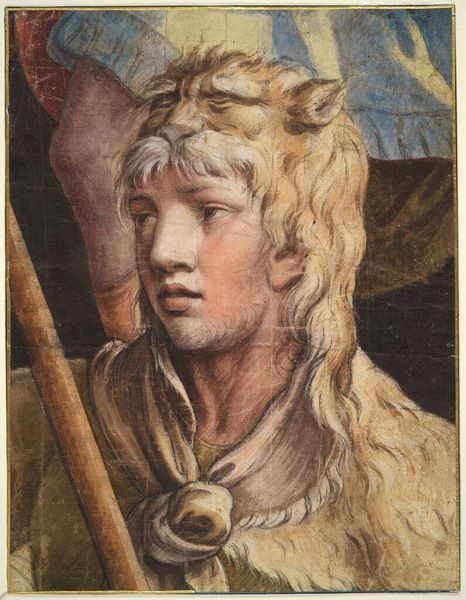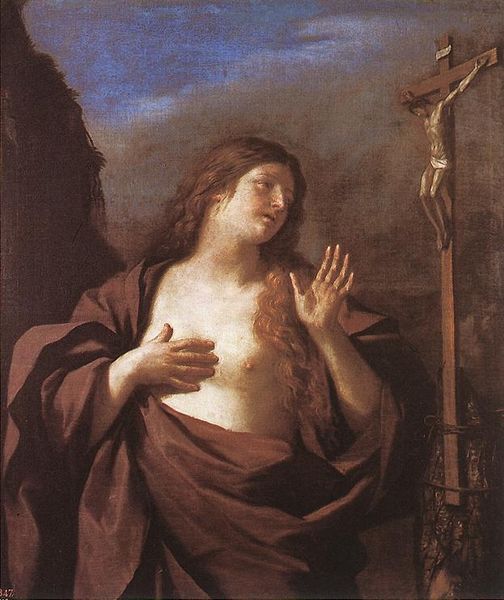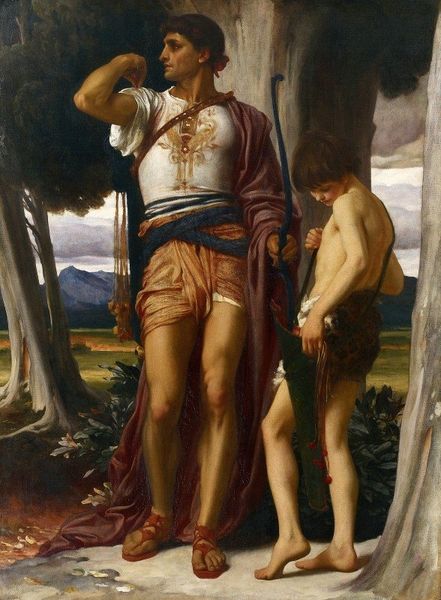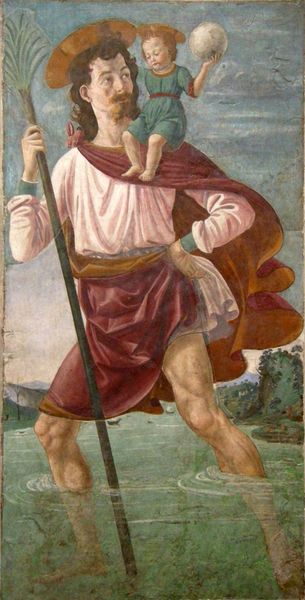
painting, oil-paint
#
portrait
#
high-renaissance
#
allegory
#
painting
#
oil-paint
#
history-painting
#
italian-renaissance
#
realism
Copyright: Public domain
Curator: Here we have Dosso Dossi's "Saint George," created around 1513, and housed at the J. Paul Getty Museum. At first glance, one can’t help but notice the gentle somberness that envelops the figure. The colors are rich, the brushwork creates subtle transitions, but there is no glorious dragon slaying in sight! Editor: You’re right. He's clearly weary. And that's precisely what draws me in. This isn’t some idealized hero, but a man seemingly weighed down by the responsibilities placed upon him. That he appears in simple armor without any fanfare humanizes him, while challenging traditional portrayals of power. The religious undertones are undeniable, but his ambiguous stance transcends his given heroic archetype. Curator: Interesting perspective. While there's that vulnerability, it’s still a strategic image to associate its commissioner—perhaps a ruler, if we dig a bit through Renaissance records—with a virtuous, almost holy persona through the image of Saint George. Consider how carefully chosen elements like the broken lance imply battle and martyrdom, reinforcing his image as protector. It is both propaganda and painting. Editor: Yes, that shattered lance could signify a recent victory or the battle just before his ultimate one, alluding to the fight between good and evil. This reading brings the painting closer to our own anxieties with current day power structures, so it seems less like simple valor and instead becomes complex; even painful. What, exactly, does being a “saint” or “protector” require? And what does one lose when undertaking these identities? Curator: The lack of overt symbolism—aside from the halo and lance—opens it to these broader, relevant interpretations, I agree. Dosso's Saint George challenges the static presentation of the classic hero. The human, weary portrayal gives it that sense of authenticity and intimacy you've named. Editor: And it is precisely this ability to simultaneously acknowledge both the personal and political ramifications of valor, through these stylistic artistic choices, which makes “Saint George” so gripping even now.
Comments
No comments
Be the first to comment and join the conversation on the ultimate creative platform.



